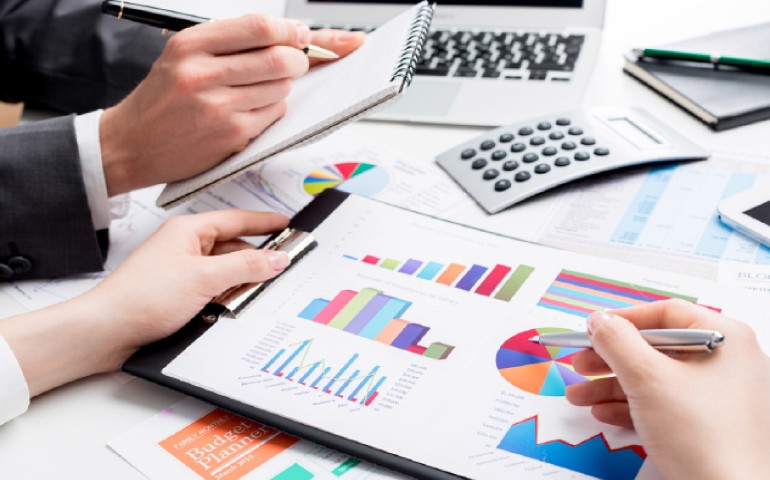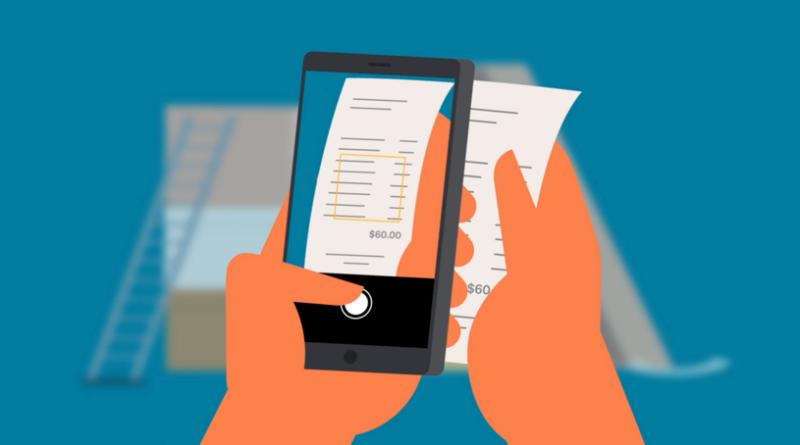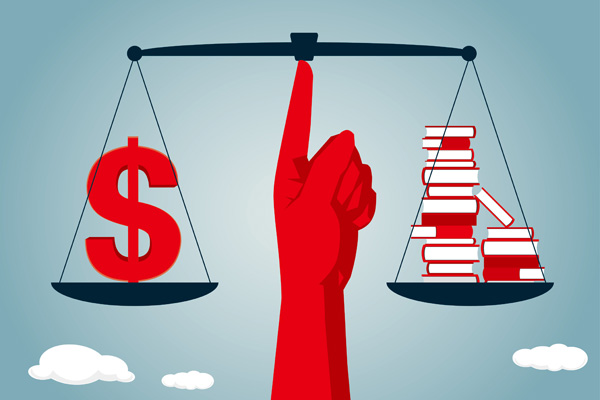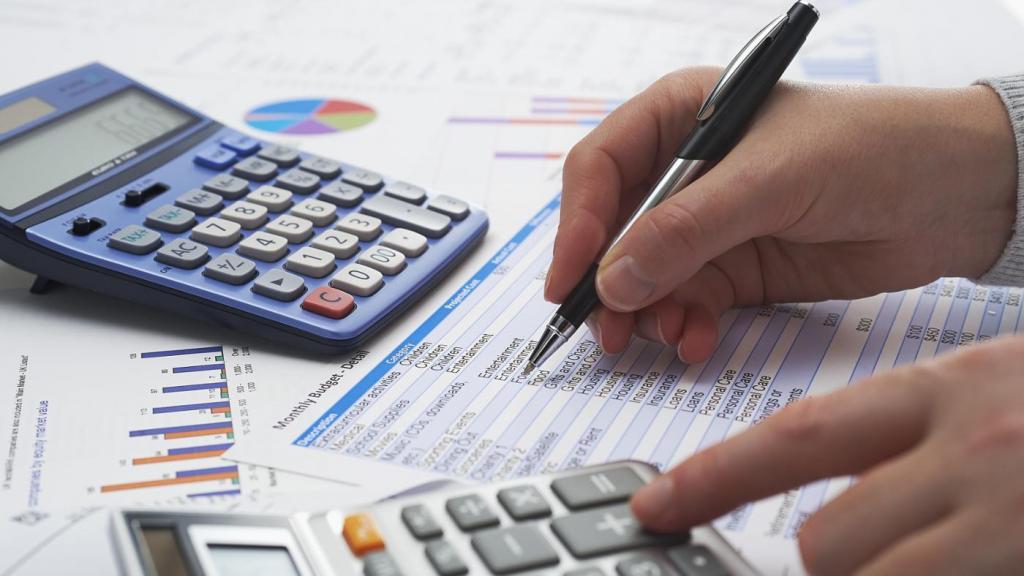Each production unit of any area of activity of the enterprise seeks to receive the maximum possible income from its functioning. The company is trying not only to sell its products at a bargain price, but also to reduce production costs. Non-price factors of market conquest come to the fore. Cost management in order to form their optimal structure, as well as reduce their value, allows to reduce product prices, which, all other things being equal, gives the company the opportunity to maintain or even strengthen its competitive position in the market.
In the conditions of market relations it is very important to study not only the essence of costs and their characteristics, but also the issues of their impact on profit. Costs are accounted for in many economic sciences, but they play the largest role in management accounting. Managers of different levels need information about expenses for calculating profits, marginal revenue, value, stock balances, choosing an assortment policy, a policy of technical re-equipment, motivation and others.
Financial accounting data on availability in the enterprise as a whole is not enough to make decisions on operational, tactical and strategic management. Therefore, these problems of enterprise cost formation and accounting of these costs are especially relevant in market conditions.

Cost concept
In domestic and foreign scientific journals, the rules often use three concepts, the differences of which are not strictly defined. These are the concepts of costs, costs and expenses.
Modern theory and practice provide many definitions of costs. Thus, a number of specialists present costs as an economic interpretation, expressing the totality of all resources in the field of stocks, labor and finance, the consumption of which is associated with the production process.
M.A. Vakhrushina describes costs as a monetary estimate of the amount of resources used for any purpose. Other authors understand the totality of movements of funds related to assets if they are able to generate future income or liabilities. If this does not happen, then the undistributed profit of the enterprise is defined as the cost for a specified period.
In the economic encyclopedia, costs are interpreted as a monetary expression of the value of economic resources expended when an economic entity performs any actions.
The interpretation of the concept of "costs" is also ambiguous. To understand how accounting systems calculate costs and effectively communicate accounting information to interested parties, it is necessary to clearly understand what the term “costs” means in each case. It has many meanings and is used differently in different situations.
Costs are an estimate in monetary terms of all resources in relation to finance, labor and materials, information that are associated with the organization of the production process and implementation characteristics for a period of time. The main cost characteristics are as follows:
- monetary assessment of various types of resources, providing the principle of their measurement;
- target setting, which is associated with the production and sale of products in general or at one of its stages;
- the period of time that should be attributed to the production of products.
It should be noted that if the costs are not associated with production and are not written off (not completely written off) for this product, then they become a stock in warehouses in the form of raw materials, materials, etc.
We can say that costs have the property of reserve capacities, in this plan they can be attributed to the assets of the company. The main features of the costs are:
- dynamism;
- manifold;
- difficulties in measuring and evaluating;
- the complexity and inconsistency of the impact on the economic result.

Difference from costs from costs
Differences between costs and expenses can be formulated in the following provisions:
- Costs and costs differ in the economic nature of the valuation. Costs are of a settlement nature, reflected in internal accounting, depend on the accounting system used and are not necessarily related to payment flows in the enterprise. Costs are not of a payment nature. They are presented in the financial statements of the company.
- Costs may not have signs of costs: a number of costs in accounting for production has no analogues between costs.
- Lack of costs of direct connection with production. Although they arise in the reporting period in the production process, nevertheless, they are not always correlated with this process.
Among specialists, there are those who believe that in their content costs are a broader concept than costs, and justify this by the fact that costs can be incurred in connection with all the economic activities of the enterprise, and costs are only for the manufacturing sector.
The concept of "costs" implies the concept of "costs" in relation to the production of goods (work services).

Expenses are any expenses, provided that they are incurred to carry out activities aimed at generating income.
Clause 9 of PBU 10/99 essentially describes the mechanism of transition from organization expenses to unit cost of a product. It has been established that the determination of the value of manufactured products is based on the costs of ordinary activities.

Difference from the concept of expenses
The vast majority of authors believe that costs and expenses are different concepts. Based on the above definitions, the difference between costs and expenses is presented below.
Costs are costs:
- set for a time interval;
- documented and economically viable;
- they fully transfer their value to goods sold during this period;
- the occurrence of costs occurs in conjunction with a reduction in the economic resources of the company with an increase in the amount of “payables”.

Cost classification
The main costs of accounting are grouped by economic content in accordance with the following elements:
- material costs;
- salary expenses;
- extrabudgetary funds;
- depreciation;
- other expenses.
Other expenses include:
- salary costs for managers;
- operation of machinery and space;
- travel expenses of employees;
- expenses for communication, audit, information services, security services;
- entertainment expenses;
- expenses on the sale of goods;
- taxes.
Expenses incurred by the enterprise in connection with the release of goods, the provision of services or the performance of work are recorded and included in the cost of goods, services or work of the reporting period to which they relate, regardless of the time they are paid.
In terms of cost, the following types of costs exist:
- Direct costs that are directly related to the production of a particular product.
- Indirect - expenses for administrative salaries, general production and general business. Costs of this type are associated with the production of several types of goods and should be distributed between the positions of goods in proportion to a certain indicator.
Regarding the process:
- basic;
- waybills.
In terms of output:
- Permanent
- variables.

Accounting Methods Used
Cost accounting methods are classified as follows:
- custom - it is used for small-scale production, a specific order is selected as the accounting object;
- cross-sectional - used in large-scale production, cost accounting is carried out in stages at the stages of production;
- boiler room - used at enterprises producing one type of product, accounting is made from the expenses incurred by the enterprise as a whole over a period of time;
- regulatory - used at enterprises with a wide range of industrial goods, accounting is carried out using standards with mandatory identification and consideration of the reasons for deviations from them for further analysis and prevention of these reasons at work.
Organization of accounting of production costs
To collect costs for the release of goods, the provision of services or the implementation of work, use the section "Costs of production" of the chart of accounts.
The grouping of costs in this section is most often carried out using the following settlement accounts: 20, 23, 25, 26, 28.
Account 20 and accounting of production costs are used to collect data on the costs of production of goods, services or works, which, in turn, were the goal of creating the company.
This account records both direct costs determined by the production process, and included in the cost, as well as indirect costs associated with the management and maintenance of production.
Analytical accounting in this account is conducted for individual types of products.
Indirect costs are associated with several types of goods. They are distributed in proportion to the approved indicator. Costs are paid at standard (planned) or actual production costs.
On account 23 "Auxiliary production" reflects the costs that are auxiliary to the main production (maintenance of the OS, providing heat, electricity, etc.).
Analytical accounting in this account refers to the type of production. Fees are debited to account 20 or to the cost of a particular product in the form of direct costs or distributed between individual types of goods in proportion to the selected indicator.

On account 25 "General production costs" grouped the costs of servicing the main and auxiliary manufacturing enterprises. Among the costs that are recorded on this account, there may be such payments for insurance of production vehicles, the cost of servicing these vehicles, the rental cost of production facilities and equipment, and others.
Analytical accounting of the account is carried out by separate business units and expense items. At enterprises where homogeneous goods are produced and expenses are not distributed, they are subject to write-off to the debit of account 20. At enterprises producing various goods, expenses are to be distributed between the types of goods produced. Expenses are written off to the debit of accounts 20, 23, 29. Account 25 does not have a balance at the end of the reporting period.
On account 26 "General expenses" grouped those expenses that are not directly related to production processes and are not related to management needs. For example, managers' salaries, accounting, depreciation of property that the administration uses in its activities, rent payments in the premises for the administration, etc.
Analytical accounting is carried out according to the articles of estimates and the place of occurrence. Write-off of expenses collected during the month is made depending on the chosen method of forming the cost of production. When an accountant chooses a method of accounting for the total cost of production, expenses are written off using the accounting records Dt20-Kt26, Dt23-Kt26, Dt20-Kt26. If you choose the method of recording products at a reduced price, the contents of account 26 will be charged directly to account 90-2.

Accounting Recommendations
The organization of cost accounting in various industries is characterized by its own characteristics. They are related to the conditions of a particular industry. Ministries have developed industry cost accounting guidelines. These recommendations detail and clarify the provisions of federal and industry rules for cost accounting in accounting in relation to the production of a particular industry.
In the recommendations for cost accounting in a particular industry, the business entity finds its classification of methods and methods of cost accounting, the form of source documents for their accounting, cost allocation schemes, the range of cost items and principles for calculating the cost of different products.
Enterprise cost accounting
The methods chosen by the enterprise for the preparation of production costs should be justified, should be determined by regulatory documents, industry instructions and methodological recommendations and recorded by the accountant in the accounting policies of the enterprise.
Mandatory reflection in accounting policies also depends on how costs are allocated between specific goods.
Cost accounting in the enterprise accounting should be carried out in strict accordance with regulatory documents and be timely, complete and reliable.

Score 20: key features
The cost account in accounting at number 20 is used by each organization engaged in manufacturing activities to summarize the costs of the cost of production. This account is active in the company.
In the organization of accounting of production costs, these costs are allocated in accordance with the following articles:
- material costs - the cost of acquiring raw materials, electricity, water, fuel, tools, industrial equipment, works and services performed by third parties;
- labor costs of workers who participate in production;
- social expenses;
- depreciation on fixed assets in production;
- other types: expenses for business trips of workers carried out for production purposes, deficit within the limits of natural loss, expenses for semi-finished products, expenses for future periods and other reasonable expenses.
Analytical accounting on account 20, the accountant must keep in the context of production.
The costs associated with several types of products (indirect) for inclusion in the cost of each unit of production should be distributed. The organization can independently determine an indicator proportional to the distribution of costs. This may be the volume (cost) of materials and raw materials used in the production of a certain type of product, or the salary of employees engaged in production.
Costs can be written off in the following ways:
- Regulatory or planned costs;
- according to the actual cost of production.
Tax accounting
When it comes to tax accounting, costs include economically reasonable and pronounced costs. They can be expressed in cash. Only funds that were spent on generating income from the functioning of the company are taken into account.
Accounting and tax accounting of costs are closely interconnected with each other, but also have discrepancies. Tax accounting is associated with a number of points that must be known in advance. The entrepreneur should pay attention in advance to the following nuances:
- features of the transfer of debt to a third party;
- implementation of the netting procedure;
- settlement using an account;
- calculation of accepted obligations;
- recognition of income when paying STS.
In controversial situations, the entrepreneur should be guided by the provisions of applicable law.
The period during which material costs are reflected in tax accounting for the accrual method is indicated in paragraph 2 of Art. 272 of the Tax Code of the Russian Federation. It depends on the type of material costs.
Thus, the cost of raw materials related to industrial goods is recognized as an expense on the date that such a resource is transferred to production.
In the cash method, in order to recognize material costs, in addition to supplying materials for production or signing an act, it is necessary that such expenses be paid in some way (monetary or non-monetary).
Accounting Improvement
To obtain useful data that allow you to make decisions and plan, the cost of production should be systematized in several ways:
- deferred expenses;
- non-refundable expenses;
- imputed costs in making alternative decisions;
- additional and marginal costs;
- dynamic costs in relation to the volume of industrial goods.
In order to improve the accounting of production costs in companies, it is advisable to separate the cost accounting in accounting, management and financial accounting. These areas of activity have many differences from each other, although at first glance they relate to the same issues.
It is also worth introducing methods for approving the final financial results of “input-output” and the use of foreign classifications of production costs. Foreign classification methods are more accurate and understandable.
When accounting for the costs of services, you should adhere to established recommendations.
You must use current accounts in the preparation of transactions, as well as methods that allow you to keep records as simple as possible.
Conclusion
One of the most important tasks of cost accounting in accounting is the accounting of production costs, since information on production costs is necessary directly to the director of an enterprise to formulate a financial policy aimed at increasing profitability and reducing costs. Therefore, it is important for the accountant to determine the methods of accounting for production costs that are suitable for the enterprise and how they are distributed among the products.
Account 20 in accounting is one of the main to reflect information related to the production of goods, work and services. All methods used to reflect such costs should be provided in accounting policies.
